Bulletin #2584, Hawkweed in Maine Lawns
Bulletin #2584, Hawkweed in Maine Lawns (PDF)
Adapted by Donna Coffin, Extension Professor, University of Maine Cooperative Extension
For information about UMaine Extension programs and resources, visit extension.umaine.edu.
Find more of our publications and books at extension.umaine.edu/publications/.

Introduction
In Maine, hawkweed is not on the state’s invasive plant list, although it is in other states. Hawkweed can be a concern to homeowners with lawns that get infested with it. It can also be a problem where the grass is not thriving due to low fertility, dry soils, or compaction. It can also be a problem in pastures and hayfields.
Identification
Hawkweeds are in the sunflower family with milky juice, yellow or orange dandelion‐like flower heads, and are bristly‐hairy overall. Plants have rosettes of strap or lance‐shaped leaves at the base of the stem. Basal leaves of most non‐native hawkweeds usually persist through flowering. Hawkweeds hybridize freely with native and non‐native species and are very difficult to identify species.
Many non‐native hawkweeds have stolons (runners), allowing for aggressive vegetative reproduction. It is an indicator plant for infertile soils. Native hawkweed species do not have stolons, although some non-native hawkweeds lack them, too. Orange hawkweed (Hieracium. aurantiacum) has been reported to be allelopathic. This means it can inhibit the germination of other plants by producing toxic chemicals in the surrounding soil. In early spring during cool weather hawkweed leaves may appear purplish, but green up with warmer temperatures.
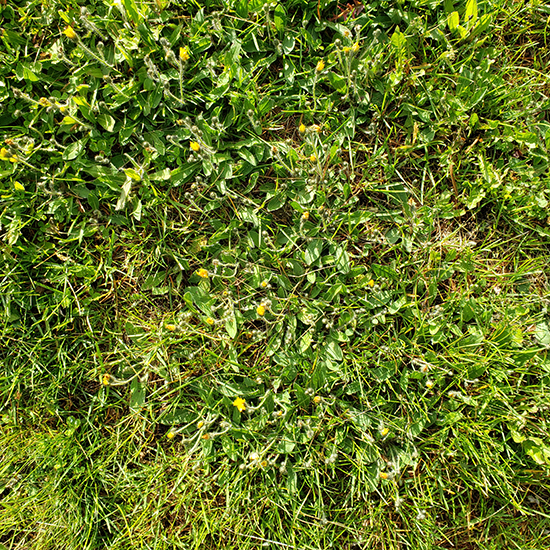
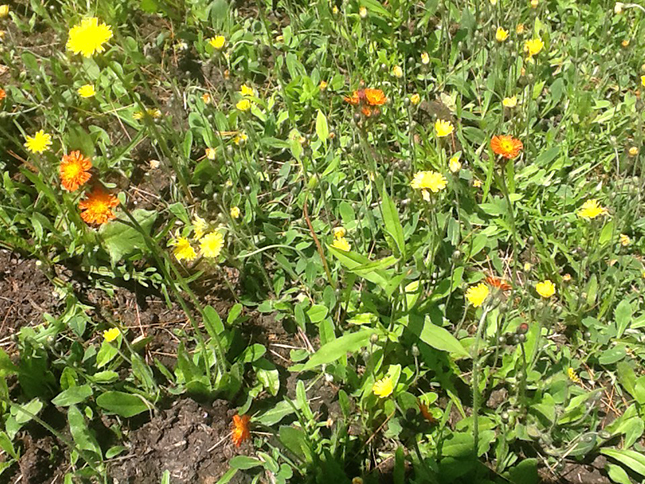
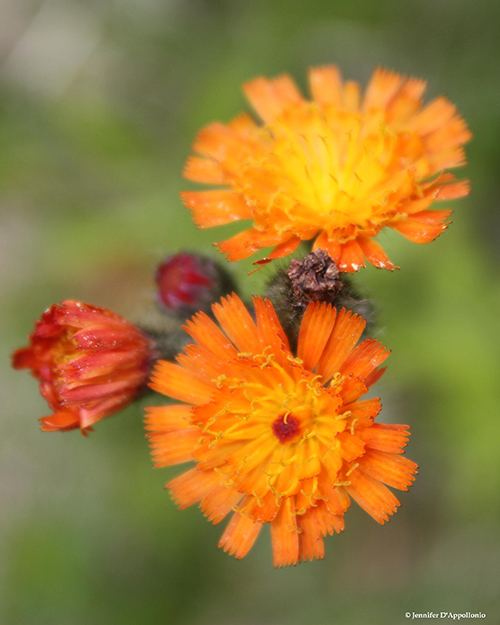
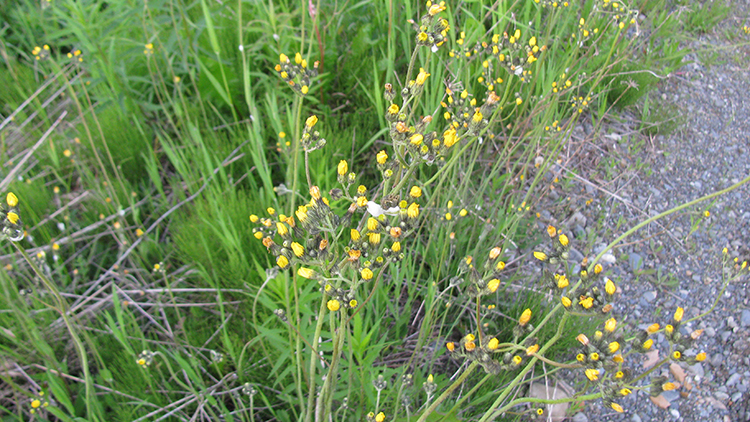
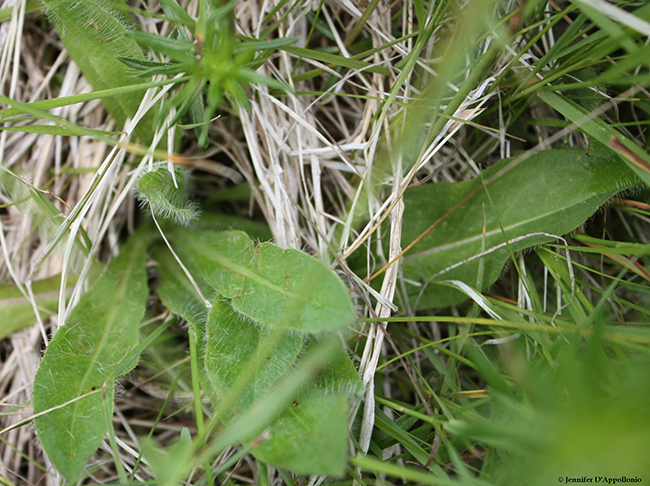
Habitat
Hawkweeds prefer full sun or partial shade and soil that is well‐drained, coarse‐textured, and moderately low in organic matter. They are mostly found on roadsides and in fields, pastures, and mountain meadows. Hawkweeds tolerate some shade and can grow in forest openings and cleared areas. Orange hawkweed is commonly found in or near residential yards and garden areas where it escapes from intentional plantings or as part of a “wildflower meadow mix.”
Reproduction & Spread
There are both annual and perennial hawkweeds. Annuals are spread by seed. Perennials also reproduce by seed as well as vegetatively. Some hawkweeds can reproduce vegetatively by runners, also known as stolons, which are above-ground stems. Hawkweeds can also produce viable seed without pollination. For most hawkweed species, flowering typically starts in late May or early June. Usually, some plants go to seed starting in July but plants continue to flower and go to seed through September. As a result of prolific seed and stolon production each season, hawkweeds are successful competitors, crowding out native, ornamental, pasture, and crop species.
Redeeming qualities
Flowers are visited by a variety of insects, including bees and butterflies. Also, leaves are nutritious for livestock, though trichomes (hairs on the leaves) limit animals’ desire to eat them. Plants can prevent soil erosion. They were originally introduced to the United States from Europe as ornamentals.
Control
No single management practice can be implemented just once to manage hawkweed. Ultimately, the management of hawkweed will depend on a program that integrates multiple procedures that increase the competitive ability of desired species of grass such as removing the hawkweed and adjusting the soil fertility.
- Test soil to find out what soil nutrients are deficient. Contact the Analytical Lab and Maine Soil Testing Service for soil testing information.
- Soil nutrients need to be added to encourage grass to outcompete hawkweed. Spread soil nutrients as needed on the whole lawn. (lime, fertilizer, compost, etc.) Refer to Bulletin #2154, Fertilizing a Home Lawn in Maine for details about when and how to fertilize your lawn. In areas of bare soil, where hawkweed was removed, till or mix soil nutrients into the soil. Spread seed on bare soil areas, lightly rake, and firm soil. Keep moist if possible until new grass comes in. Endophyte-enhanced perennial ryegrass seed can be used to fill any bare spots quickly in lawns (not recommended for pastures or hayland).
- Remove Hawkweed
- Spotty infestations can be hand-pulled. Use an iron rake to pull up the plants and roots. Hand removal can be effective if care is taken to remove as much of the root as possible. Intensive hand removal on lawns is more effective if used in conjunction with fertilization, which can help the grass to outgrow the hawkweed.
- Mowing is ineffective because rosettes are so close to the ground. Although mowing prevents seed production by removing flowering stems, repeated mowing encourages faster vegetative spread.
- Widespread infestation needs a combination of methods (improve soil fertility, herbicide treatment, improve competitiveness of grass). Broadleaf lawn growth-regulator type herbicides, containing 2,4-D, dicamba, and/or trimec (Weed Clear Weed Killer, Preen Broadleaf Weed Killer, etc.) used according to label directions can be effective in gaining initial control but it is rarely a long-term solution to the management of hawkweed. Plants should be treated when they are in the rosette stage before they flower. If necessary a second application can be made after 30 days.
- For homeowners, a “weed and feed” type fertilizer is a less labor-intensive option, since it includes both herbicide and fertilizer. (Ace Weed and Feed, Scotts Turf Builder, etc.) Application rates for these products are based on weed control and not soil fertility, so soil nutrients may not be at optimum levels. Always follow the pesticide label directions attached to the pesticide container you are using. Remember, the label is the law.
- If using a herbicide, remember that it may kill desirable plants if not used according to instructions. If necessary and allowed by the label, a second application can be made later in the season.
Steps to reseeding patch of lawn


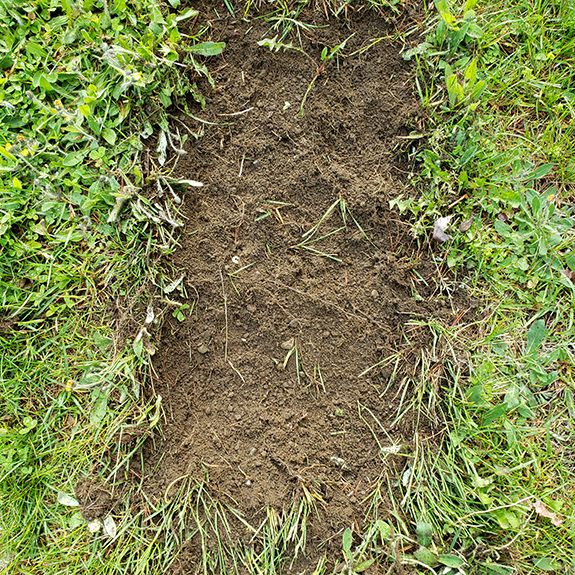
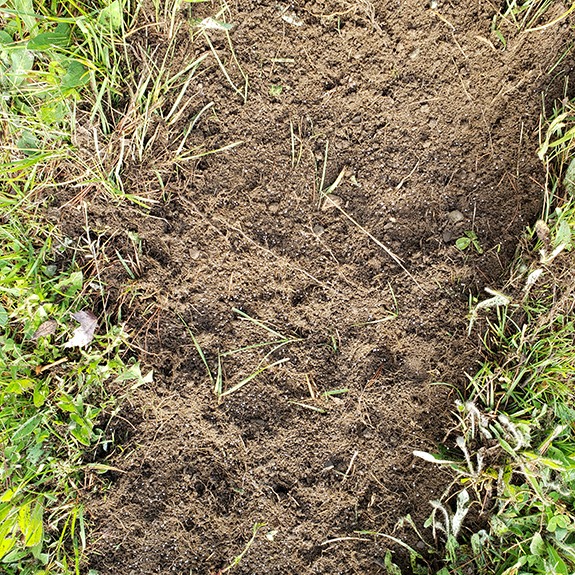

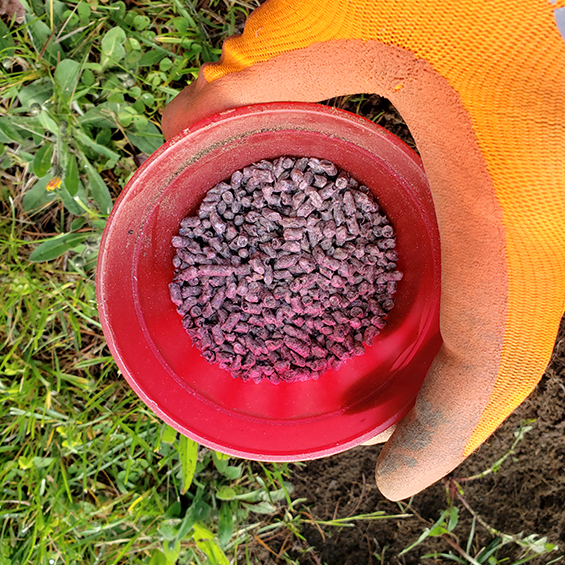
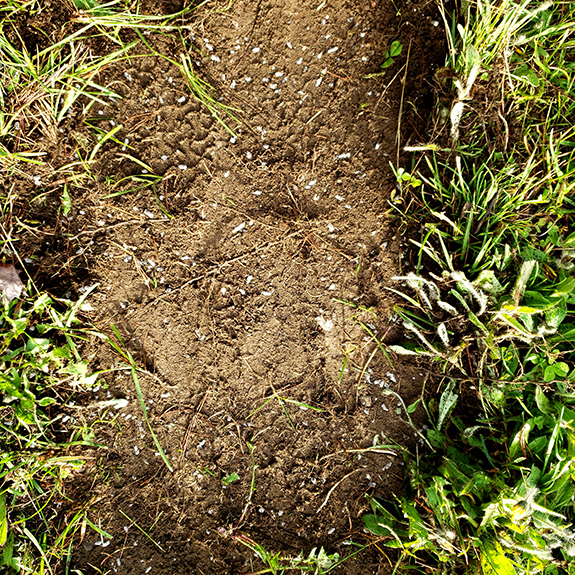
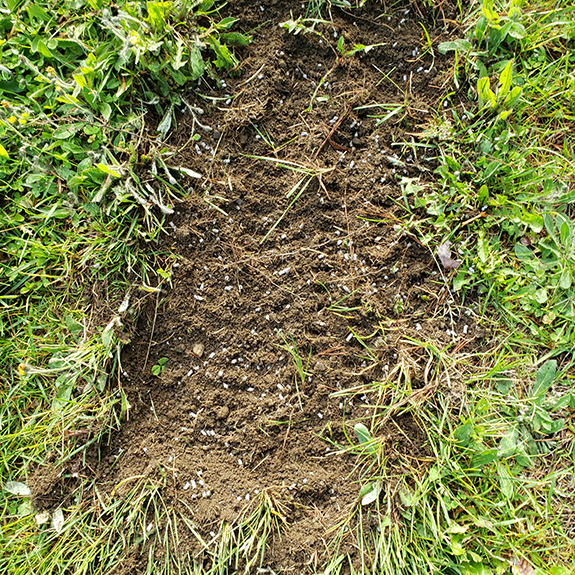


Additional Information
- Bulletin #2243, Maintaining a Home Lawn in Maine
- Bulletin #2367, Establishing a Home Lawn in Maine
- Bulletin #2166, Steps to a Low-Input, Healthy Lawn
Sources
- Berg Stack, L. Maintaining a Home Lawn in Maine #2243, 2011, University of Maine Cooperative Extension, https://extension.umaine.edu/publications/2243e/
- D’Appollonio, J, Orange Hawkweed, 2011, UMaine Extension https://extension.umaine.edu/blueberries/weed-images/herbaceous-broadleaf-weeds/redorange-flowers/orange-hawkweed/
- DiTomaso, J.M., G.B. Kyser et al. 2013. Weed Control in Natural Areas in the Western United States. Weed Research and Information Center, University of California. 544 pp. https://wric.ucdavis.edu/information/natural%20areas/wr_H/Hieracium.pdf
Special thanks to the following reviewers:
Gary Fish, State Horticulturist, Maine Department of Agriculture, Conservation and Forestry
Rebecca Long, Extension Professional, University of Maine Cooperative Extension
Caragh Fitzgerald, Associate Extension Professor, University of of Maine Cooperative Extension
Adapted with permission from King County, Washington State, Noxious Weed Control Program Best Management Practices, 2010
Information in this publication is provided purely for educational purposes. No responsibility is assumed for any problems associated with the use of products or services mentioned. No endorsement of products or companies is intended, nor is criticism of unnamed products or companies implied.
© 2022
Call 800.287.0274 (in Maine), or 207.581.3188, for information on publications and program offerings from University of Maine Cooperative Extension, or visit extension.umaine.edu.
In complying with the letter and spirit of applicable laws and pursuing its own goals of diversity, the University of Maine System does not discriminate on the grounds of race, color, religion, sex, sexual orientation, transgender status, gender, gender identity or expression, ethnicity, national origin, citizenship status, familial status, ancestry, age, disability physical or mental, genetic information, or veterans or military status in employment, education, and all other programs and activities. The University provides reasonable accommodations to qualified individuals with disabilities upon request. The following person has been designated to handle inquiries regarding non-discrimination policies: Director of Institutional Equity and Title IX Services, 5713 Chadbourne Hall, Room 412, University of Maine, Orono, ME 04469-5713, 207.581.1226, TTY 711 (Maine Relay System).

